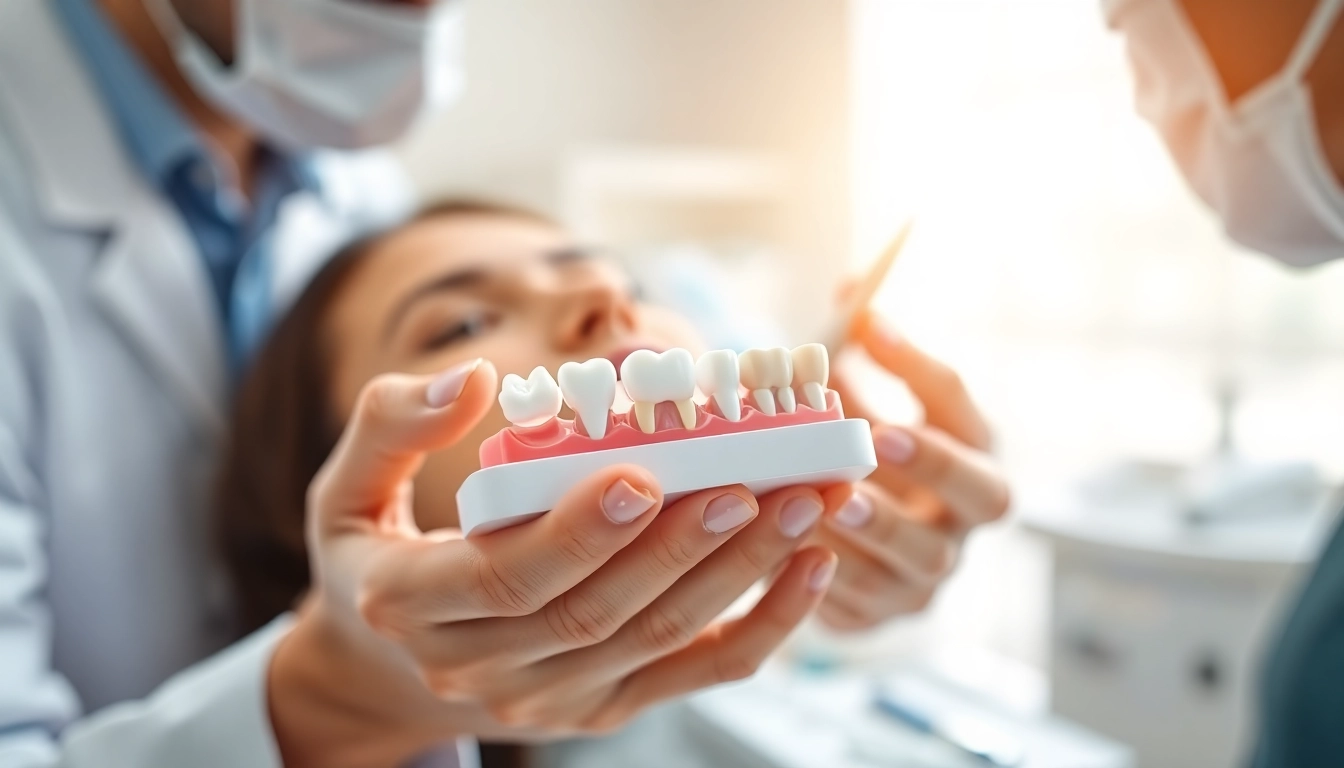
When it comes to maintaining oral health, the topic of crowns often surfaces due to their pivotal role in dental treatments. Dental crowns are robust, tooth-shaped caps that encase damaged teeth, restoring not only functionality but also aesthetics. In this comprehensive guide, we will explore what crowns are, their types, the placement procedure, advantages, and necessary maintenance. Whether you’re considering crowns for the first time or looking to deepen your understanding, this article serves as a valuable resource.
What Are Dental Crowns?
Definition and Purpose of Crowns
A dental crown is essentially a cap placed over a tooth to restore its shape, size, strength, and improve its appearance. Crowns serve multiple purposes: they provide structural support for weakened teeth, protect teeth after root canals, and cover dental implants. By covering the whole tooth, a crown can help prevent further decay or damage.
Common Reasons for Crown Placement
- Severe Decay: When a tooth is extensively decayed, a crown can encapsulate the remaining tooth structure, providing stability.
- Fractured Teeth: Cracked or broken teeth can be reinforced with crowns, allowing for normal chewing and preventing further damage.
- Root Canals: Following a root canal treatment, a tooth is often left fragile. A crown protects the tooth from further damage and restores its function.
- Cosmetic Reasons: Crowns can mask imperfections such as misshaped or discolored teeth, enhancing the overall smile.
How Crowns Support Oral Health
Crowns not only restore the functionality of compromised teeth but also contribute to overall oral health. By covering damaged teeth, they help prevent bacterial infections and further decay. This protective layer not only helps maintain the integrity of your tooth but can also restore proper bite alignment, essential for effective chewing. Furthermore, aesthetically pleasing crowns can promote a healthier self-image, leading to better oral hygiene practices.
Types of Dental Crowns
Overview of Material Options for Crowns
There are several materials used for dental crowns, and the choice often depends on various factors such as strength, location in the mouth, and aesthetic preference. Common materials include:
- Porcelain: Ideal for front teeth due to its natural appearance. Porcelain crowns blend seamlessly with existing teeth.
- Porcelain-Fused-to-Metal: These crowns offer a balance between durability and aesthetics but may reveal a metal line over time.
- Gold: Renowned for its strength and long-lasting nature, gold crowns are suitable for back teeth where chewing pressure is greatest.
- Resin: These crowns are less durable but offer a cost-effective solution for temporary use or pediatric patients.
Comparison of Crowns Based on Strength and Aesthetics
When comparing crowns, strength vs. aesthetics comes into play. Gold crowns, while not as visually appealing, can withstand significant chewing forces. In contrast, porcelain crowns may blend seamlessly with your smile but could be more prone to chipping or fracturing. Porcelain-fused-to-metal crowns offer a middle ground, providing a robust inner structure with a pleasing outer appearance. Ultimately, the choice will depend on individual needs and the guidance of your dentist.
Cost Considerations for Different Crown Types
The cost of dental crowns varies widely based on the type of material used, the location of the dental practice, and the individual case. On average:
- Porcelain crowns typically range from $800 to $3,000.
- Porcelain-fused-to-metal crowns cost around $500 to $1,500.
- Gold crowns generally fall between $800 and $2,500.
- Resin crowns are usually the least expensive option, costing $300 to $500.
Dental insurance may help cover some costs, making it essential to check with your provider regarding your coverage.
The Crown Placement Procedure
Initial Consultation and Preparation Steps
The journey towards getting a crown begins with a thorough consultation with your dentist. During this appointment, your dentist will assess the condition of your teeth, discuss the best material options, and take necessary X-rays. If the tooth is damaged, the dentist may need to perform preliminary procedures to prepare the tooth for the crown.
Step-by-Step Crown Placement Process
- Anesthesia: Numbing the affected area with a local anesthetic to ensure you are comfortable during the procedure.
- Tooth Preparation: The dentist will carefully shape the tooth by removing any decay and altering its structure to ensure a proper fit for the crown.
- Impressions: Taking impressions of your teeth to create a custom crown, which can be done using traditional molds or digital scanning technology.
- Temporary Crown: If your crown will take time to fabricate, a temporary crown may be placed for protection.
- Crown Placement: Once the permanent crown is ready, the dentist will remove the temporary one and bond the new crown into place using a dental cement.
Aftercare and Recovery Tips
After receiving your crown, proper care is critical for its longevity. Avoid sticky or hard foods for the first few days. Maintain good oral hygiene by brushing twice daily and flossing regularly, focusing on the gum line around the crown. Regular check-ups with your dentist are also essential to monitor the crown’s condition and overall oral health.
Advantages of Dental Crowns
Improving Tooth Functionality
Crowns are not just cosmetic fixes; they restore function to damaged teeth. By providing a robust structure, crowns enable patients to chew food effectively, reducing strain on adjacent teeth. This restoration can lead to improved overall oral health and function.
Enhancing Aesthetics and Confidence
One of the most significant benefits of crowns, especially those made from porcelain, is their ability to enhance the aesthetic appeal of one’s smile. They can correct imperfections, and this, in turn, can lead to increased confidence. A beautiful smile significantly influences social interactions and self-perception.
Long-Term Oral Health Benefits
Crowns can prevent further decay of a tooth and reduce the risk of potential abscesses. Additionally, when placed after a root canal, they protect such vulnerable areas from exposure to harmful bacteria. Consequently, proper crowning can result in long-term savings by avoiding more extensive dental work in the future.
Pitfalls and Considerations When Getting Crowns
Common Complications and Side Effects
While crowns are generally considered safe, there are possible complications associated with their placement. Patients may experience sensitivity to temperature changes for a few days following crown placement. In rare cases, crowns may become loose or fall off if not properly fitted, or if an underlying tooth becomes damaged. Regular dental visits can help identify and resolve these issues early on.
Maintaining Your Crowns for Longevity
To extend the lifespan of your crowns, adopt a comprehensive oral care routine. Regular brushing and flossing are essential, along with biannual dental cleanings. If you grind your teeth at night, discuss the possibility of a night guard with your dentist, as this can protect your crowns from unnecessary wear.
When to Consult Your Dentist About Issues
If you notice persistent pain, sensitivity, or any unusual changes around the crown, consult your dentist promptly. Timely assessments can prevent further complications and ensure your crowns and the underlying tooth remain healthy and functional.






